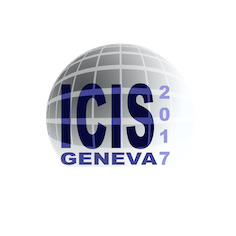Speaker
Description
Multi cusp DC arc-discharge hydrogen negative ion ($\mathrm{H}^-$) source has been developed for proton cyclotron, which is used for Boron Neutron Capture Therapy (BNCT) [1, 2]. In order to shorten the treatment time for BNCT, it is required to get high extracted beam current from the source.
$\,\,\,\,\,\,\,\,\,\,\,\,$The final goal of this study is to understand the dependency of the $\mathrm{H}^-$ production on the following operation parameters and optimize the $\mathrm{H}^-$ production in the source. 1) geometry of the source chamber and location of filaments, 2) 3D magnetic configuration, 3) the position of $\mathrm{H}_2$ gas injection and 4) arc-discharge power.
$\,\,\,\,\,\,\,\,\,\,\,\,$In this study, we focus on $\mathrm{H}^-$ surface production. It is pointed out that H atom flux onto the plasma grid (PG), especially Franck Condon H atom with first flight, plays a key role for the $\mathrm{H}^-$ surface production [3]. Therefore, it is necessary to evaluate the spatial distribution of H atom production due to the $\mathrm{H}_2$ dissociation and the H atom flux onto the PG. In this study, these important parameters have been numerically calculated. The numerical model consists of two parts. Firstly, the electron energy distribution function (EEDF) in the source has been calculated by KEIO-MARC code [4,5,6]. Secondly, neutrals ($\mathrm{H}_2$ ,H) transport has been simulated by Monte Carlo method with the EEDF by KEIO-MARC code being fixed.
$\,\,\,\,\,\,\,\,\,\,\,\,$Based on the above model, we are now performing a series of numerical simulations. These simulation results will be useful to understand the dependency of the parameters noted above on the ($\mathrm{H}^-$) production and optimize the ($\mathrm{H}^-$) production in the source.
References
[1] Etoh H, Aoki Y, Mitsubori H, et. al. 2014 Rev. Sci. Instrum. $\bf{87}$ 02B107.
[2] Etoh H, Onai M, Aoki Y, et. al. 2016 Rev. Sci. Instrum. $\bf{87}$ 02B135.
[3] Takado N, et. al. J, Appl, Phys, $\bf{103}$ , 053302 (2008).
[4] Fujino I, Hatayama A, Takado N and Inoue T, 2008 Rev. Sci. Instrum. $\bf{79}$ 02A510.
[5] Terasaki R, Fujino I, Hatayama A, Mizuno T and Inoue T, 2010, Rev. Sci. Instrum. $\bf{81}$ 02A703.
[6] Shibata T, Kashiwagi M, Inoue T, Hatayama A, and JAEA NBI Group 2013 J. Appl. Phys, $\bf{114}$ 143301.
